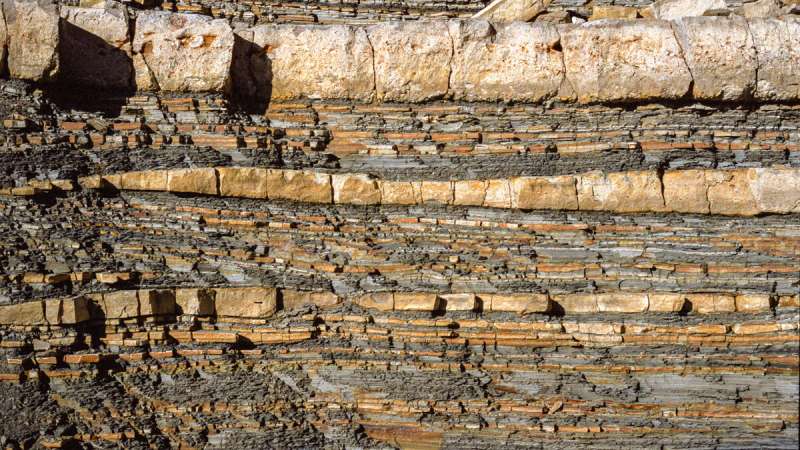This article has been reviewed according to Science X's editorial process and policies. Editors have highlighted the following attributes while ensuring the content's credibility:
fact-checked
peer-reviewed publication
trusted source
proofread
Changing environments can change layers formation speed in sedimentary rocks, leading to incorrect time estimates

Layers of sedimentary rock are often studied to recreate Earth's history. But rocks aren't always the most reliable historians. New research shows that environmental conditions can substantially affect how—and how fast—sediment accumulates, misleading scientists who are trying to estimate the lengths of time periods in Earth's past.
Barefoot et al. studied sedimentation rates and patterns by mimicking a natural system using an experimental basin. The researchers simulated floods of various amplitudes and measured how these floods affected sediment accumulation.
Low-amplitude floods distributed sediment in patterns marked by roughness, with many localized ridges and hills separated by valleys, the researchers found. That meant that when flood waters rose in a high-amplitude event, there were plenty of topographic nooks and crannies to capture sediment over a broad area, allowing it to build up in a thick, smooth layer. When the opposite transition occurred and low-amplitude floods occurred again, there were only localized rough patches to catch sediment, and the resulting layers were thin.
These depositional differences—localized versus widespread, thick versus thin—can be obscured when scientists later look at portions of the resulting sediment stratigraphy, leading to misinterpretations of the timing and duration of deposition for given layers. During a transition to a high-amplitude flood regime, for example, assuming linear sediment accumulation rates could result in overestimates of depositional duration by up to 30%, the scientists report.
Processes and feedbacks other than those studied here also affect how sediments are deposited and preserved. But, the researchers say, this work represents a step toward more accurately quantifying measurements of time gleaned from stratigraphic records.
The findings are published in the journal Geophysical Research Letters.
More information: Eric A. Barefoot et al, Sedimentary Processes and the Temporal Resolution of Sedimentary Strata, Geophysical Research Letters (2023). DOI: 10.1029/2023GL103925
Journal information: Geophysical Research Letters
Provided by American Geophysical Union
This story is republished courtesy of Eos, hosted by the American Geophysical Union. Read the original storyhere.




















